My BIG Alberta Backyard – Winter Animal Tracking
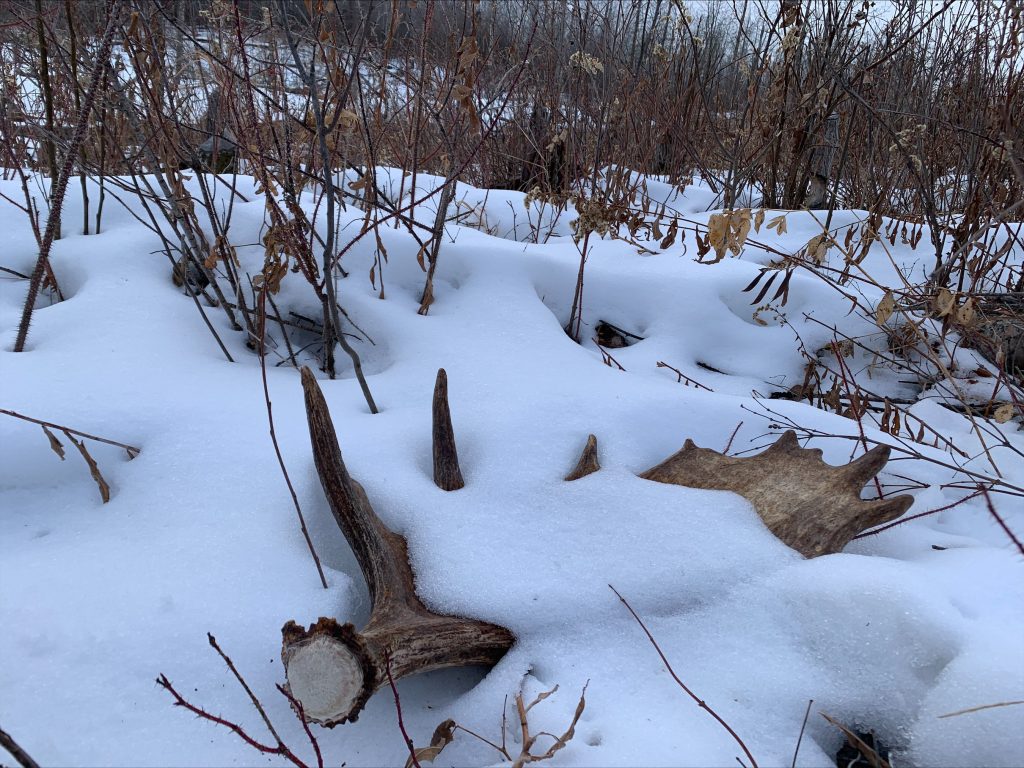
An antler lies covered in fresh snow after it was shed by a moose. Moose and deer shed their antlers in the winter, and when you’re a nature detective following tracks in the snow, sometimes you will find beautiful treasures like this one! Make sure you leave it where you find it, though; lots of animals eat shed antlers as a source of calcium. DR. JESSICA HAINES
BY DR. JESSICA HAINES
Alberta is a great place to live. It’s a big, beautiful province full of all kinds of natural wonders. In My Big Alberta Backyard, we introduce you to the unique and interesting wild spaces, diversity of wildlife that live there, that you can find in your province. This time, let’s talk about tracking animals in the winter.
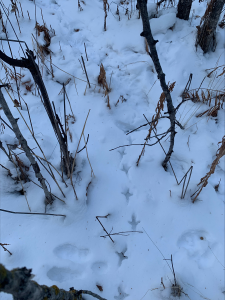
In the summer, it would have been hard to tell who lives in this brushy patch of forest. But the snow reveals that a grouse (vertical tracks) and a snowshoe hare (horizontal tracks at the bottom of the photo) live here in the same forest community! DR. JESSICA HAINES
One of my favourite parts of winter is looking for animal tracks in the snow. In the summer, animals leave little evidence of their travels as they move through their wild spaces. But in winter, animals leave tracks in the snow everywhere they go. Their tracks leave lots of hints. Was it a deer or a coyote that walked through the forest? Were they in a group or alone? Were they walking or running? You can learn lots of information by being a nature detective and examining wildlife tracks.
The best time to find tracks is soon after a fresh snowfall when the weather is cold. You can find tracks anywhere. It might surprise you what walks through your backyard when you aren’t around! Check out your backyard after it snows — you might discover that you have a jackrabbit hanging out in your neighbourhood. Go for a walk in a city park — you might spot red squirrel tracks as they run to their stores to collect food. Go to a national park such as Elk Island National Park or Banff National Park — you might find moose tracks where they crossed a walking trail.
If you want to learn to identify the animals that left the tracks behind, count how many toe impressions you see in the snow. Animals in the deer and moose family have two pointy toes. Carnivores, like lynx or coyotes, leave a track with four toes. The mustelid family, which includes weasels and wolverines, leave a track with five toes. If you want to identify the species, there are field guides that can help you — check out your local library!
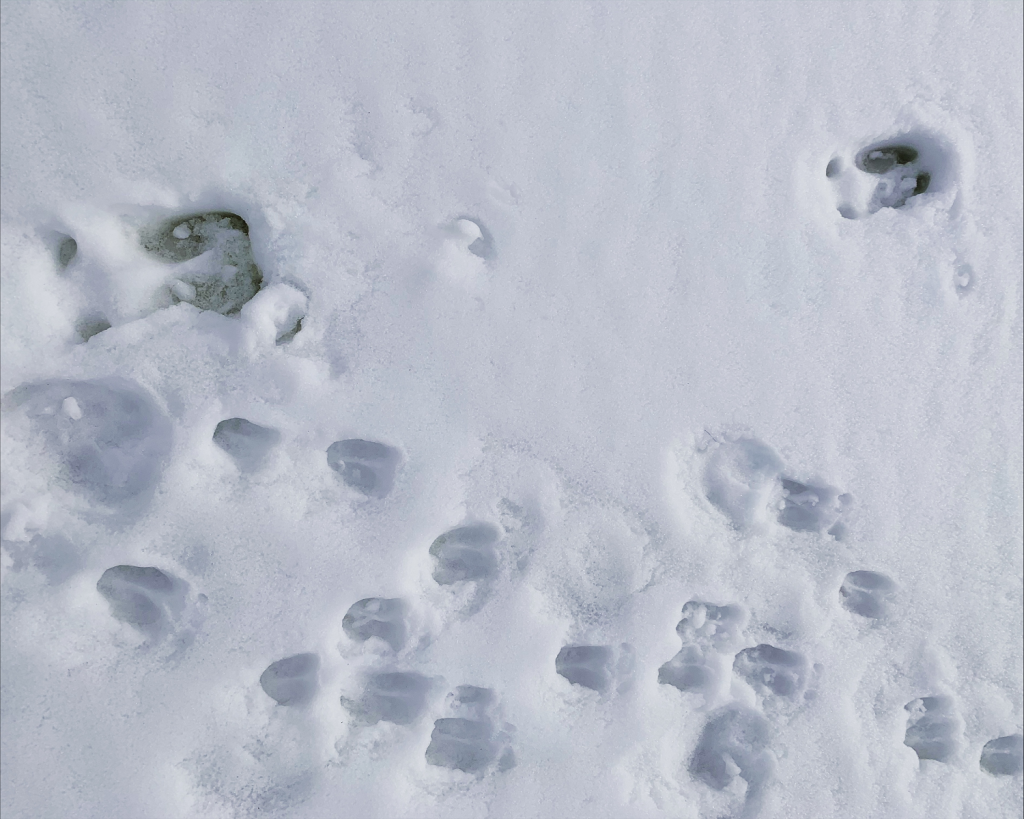
Moose and deer cross paths in the snow. Their hooves leave two pointy toe impressions, making it easy to tell them apart from other animals. The large prints on the left are moose and the smaller prints on the right are deer. The two circular imprints at the back of the moose tracks are their dew claws; these usually only touch the ground when the moose needs extra traction, like in icy conditions. DR. JESSICA HAINES
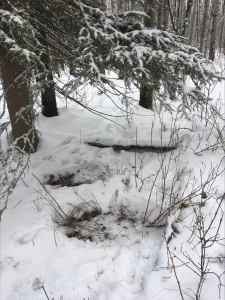
The oval impressions in the snow show us that a couple of deer laid down in this cozy spot under a spruce tree where they were sheltered from the elements and could watch their surroundings for danger. You can see a fresh set of tracks leading away from the beds towards the top of the photo. DR. JESSICA HAINES
Follow your nature detective instincts to investigate further. You could follow the tracks to learn even more about the animals who left them behind. You might discover what bushes a rabbit was snacking on — they can reach really high when the snow is deep. Or you might find mouse tracks that abruptly stop — an owl might have swooped down and snatched it up! You could find a spot where a deer made a bed in the snow. You might even find a treasure like an antler that a moose shed as he was walking through the forest.
Now, examine your own tracks. Notice how the shape of your boot shows which direction you were walking. Try walking a few steps and then running a few more. Circle back and see if you can tell by your tracks where you started running. Your tracks tell your story, too!
Tracking in the winter is a great way to learn more about the world around you. I hope you make lots of fun discoveries this winter!
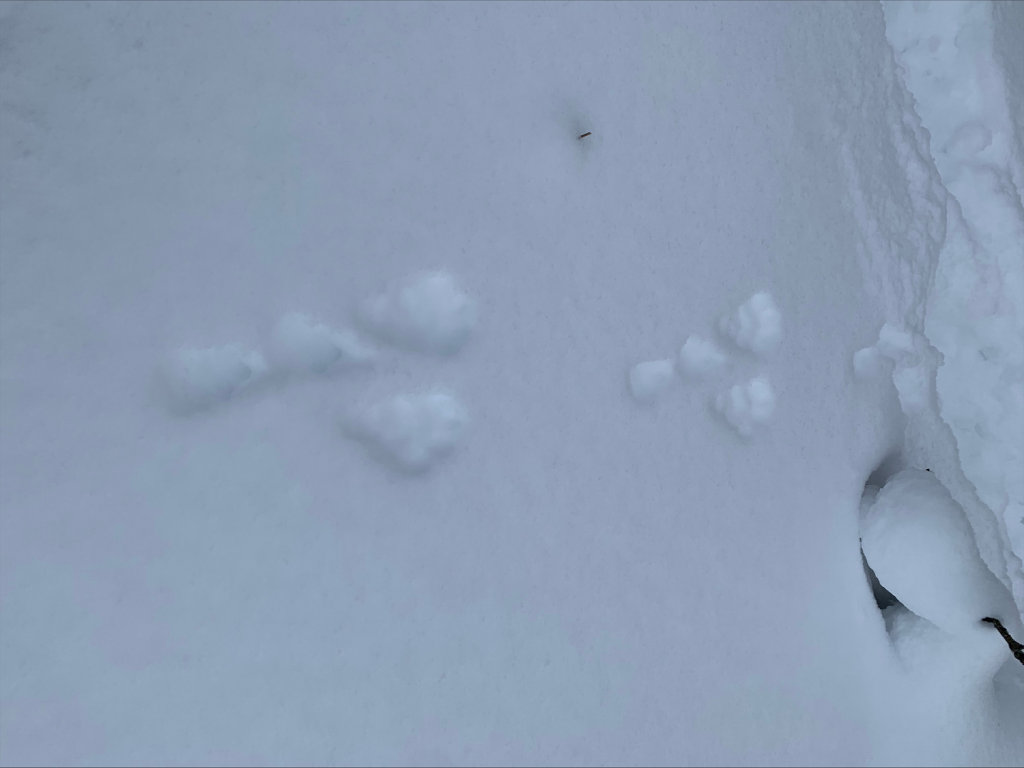
A snowshoe hare hopped across an open area in the forest, leaving these tracks behind in fresh snow. DR. JESSICA HAINES
Dr. Jessica Haines is a wildlife biologist and an assistant professor at MacEwan University. She loves to get outside and explore Alberta’s wild spaces, especially if she can take her dogs with her for the adventure.
This article originally ran in Nature Alberta Magazine - Winter 2023.
